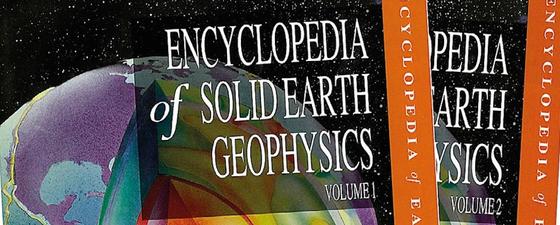Geophysics is the application of physics in geological sciences, and as such it is a vast science – or in fact, a collection of many disciplines, with both pure science and applied aspects. Specialty fields in geophysics are so advanced today that one person cannot claim to be an all-inclusive geophysicist but rather an acquisition seismologist, a paleomagnetist, or a uranium-lead geochronologist, and so forth. This state of affairs has both pros and cons. It is good, because it shows the tremendous progress made in the geophysical sciences and technology. Bad for the same reasons: geophysics has become highly disintegrated and remotely distant from the grasp of a single researcher. This state of affairs, which is true for all sciences, calls for bridges between the various disciplines of science, and in-depth encyclopedias play a crucial role.
The Encyclopedia of Solid Earth Geophysics, published recently by Springer, nicely brings together numerous geophysical topics and presents this sometimes dry, mathematical and abstract field in a language comprehendible to researchers, teachers, students, and professional geophysicists. The term ‘solid earth’ in the title indicates that the geophysics of the fluid earth (the atmosphere and oceans) is not included in this encyclopedia, and those fields aptly deserve their own separate volumes.
Gravity and seismic surveys were employed in the oil industry as early as the 1920s, and oil exploration has long been associated with geophysics. Nevertheless, what particularly accelerated research in geophysics was the International Geophysical Year in 1957-58. One of the fruits of this international venture was the publication of the two-volume International Dictionary of Geophysics, edited by S. K. Runcorn (Pergamon Press, 1967), long out of print but still a useful reference book to have on the shelf. Another classic reference book in this field is Robert Sheriff’s Encyclopedic Dictionary of Applied Geophysics, published by the Society of Petroleum Engineers (fourth edition, 2002).
In the mid-1960s the Australian geologist Rhodes W. Fairbridge (1914-2006), who at the time taught at Columbia University, started an ambitious project: editing a series of encyclopedias in various branches of earth science. The first volume, on oceanography, was published by Reinhold Company in 1966. Fairbridge continued to edit two dozen other volumes. The Encyclopedia of Earth Sciences series changed hands from one publisher to another until Springer took over and modernized the whole operation, publishing both print and electronic volumes. Charles Finkl is the editor of the new series.
In 1989, when Van Nostrand Reinhold was still the publisher, The Encyclopedia of Solid Earth Geophysics (volume 16 in the series), edited by David James, came out. It was a massive work of over 1,300 pages. But that was more than two decades ago, so Springer has now brought out a new version. The latest Encyclopedia of Solid Earth Geophysics, in two volumes and over 1,500 pages, was edited by Dr. Harsh K. Gupta, a renowned geophysicist from India who was the former director of the National Geophysical Research Institute in Hyderabad and is currently the president of the Geological Society of India and the International Union of Geodesy and Geophysics. This encyclopedia (volume 38 in the series) contains 217 articles on entries from ‘absolute age determination’ to ‘wavelet analysis,’ written by 287 authors from around the world. Eight renowned geophysicists have also served on the editorial board of the encyclopedia. The result of this impressive team work is thus an up-to-date, authoritative reference book on geophysics that will be used by many libraries and individuals for years to come.
Given that the entire oil and gas industry depends on geophysical science and technology, the new encyclopedia should be of great interest to petroleum explorers, researchers and educators as well. Indeed more than one-fourth of the Encyclopedia is devoted to seismic theory and techniques. Other geophysical methods are also covered and new topics such as GPS geodesy and tsunami warning are also included. A list of references at the end of each article directs the interested reader for further research.





